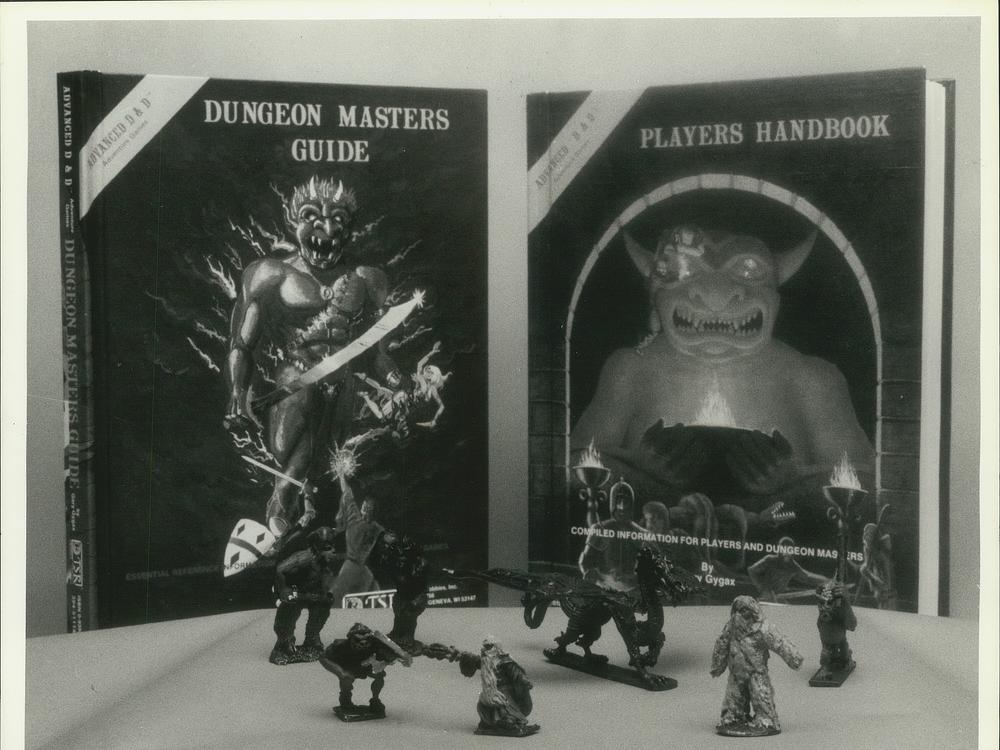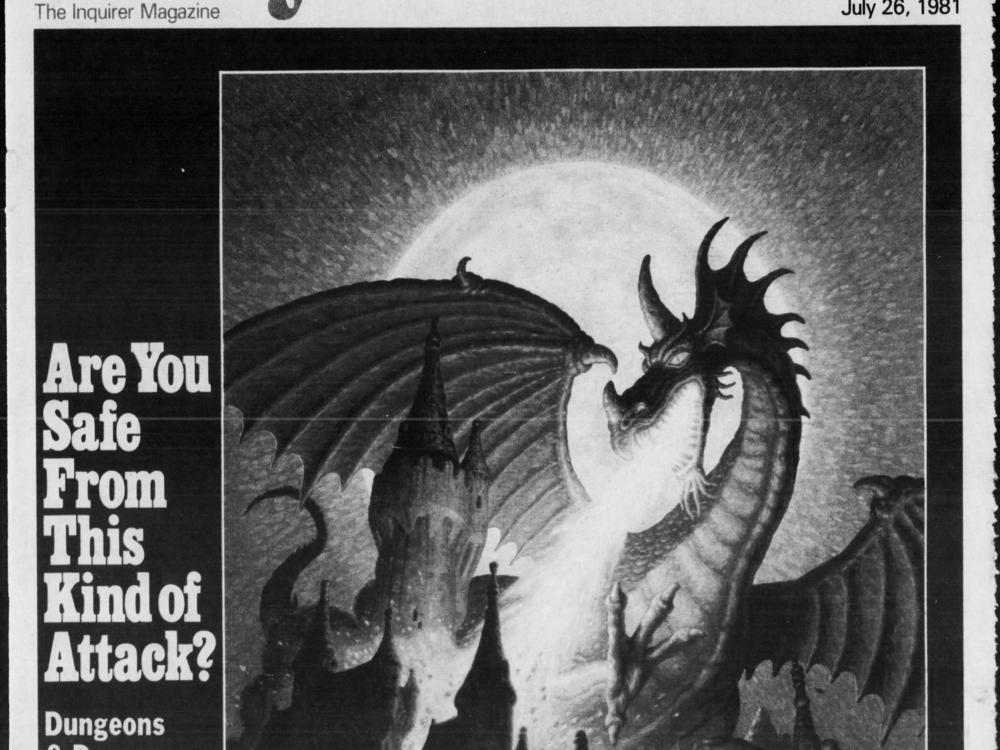Section Branding
Header Content
Dungeons, Dragons and shoulder pads: Why I loved D&D as a closeted teen
Primary Content
Dungeons & Dragons turns 50 this year. The tabletop role playing game (TTRPG) has gone through a slew of revised editions, expansions and hack ‘n’ slay imitators, weathered a Satanic panic or two, seen itself replaced in the hearts and minds of the nation’s nerds by games like Magic: The Gathering and Pokemon, only to experience a bold popular resurgence in recent years, thanks in no small part to so-called Actual Play TTRPG podcasts and web series like Critical Role, Dimension 20 and The Adventure Zone.
In other words: As a pop culture phenomenon, it’s been hacked, but it still slays.
I played my first game of D&D in 1978, just four years after its launch. I was 10 years old; it was summer. My friend down the street invited me over to his house, which usually meant forcing me to play catch with him in his backyard (read: He’d whip a baseball at my face, I’d flinch and let it bounce off me, I’d pick it up and toss it back so it landed in the grass 3 feet in front of him with a woeful thud; repeat until dinner time). On this occasion, to my surprise and delight, we sat on his screened-in porch as he took out what I have since learned was the box of rulebooks and polyhedral dice known as the Dungeons & Dragons Basic Set.
I loved it from the jump, largely because everything about the game was so deeply indebted to my beloved Tolkien (Wizards! Halflings! Orcs! That titular dragon on the box cover, atop its pile of gold!). But it didn’t last; my neighbor started at a new school in the fall, and we lost touch.
I didn’t start playing my first real, sustained D&D campaign until three years later. My friend David wanted to try his hand at being a dungeon master and invited me and three other kids I didn’t know to form an adventuring party. When I arrived at that very first session in David’s bedroom, they’d already created their characters — a fighter, a thief and a ranger. They urged me to play as a cleric, who could hang back and heal them whenever they got beaten up. I liked the idea of staying out of the heat of battle and just being the guy who patched my friends up, earning their deep and abiding gratitude. Feeling needed, appreciated. It was tempting, I admit. But then destiny, in the form of my nascent queerness, intervened.
David invited me to look through a thin paperback D&D supplemental rulebook called The Rogues Gallery — page after page of ready-made characters I could choose from. I flipped through the clerics, but nothing grabbed me. But then, on page 12, just above the chart of a class of characters called Illusionists, I saw it. Him.
It was a pencil sketch by illustrator Jeff Dee. A tall, thin male figure stands facing the viewer. In his right hand he holds a staff, while his left is open, palm up. He holds his arms slightly away from his body, and sets his shoulders at a rakish tilt — the resulting stance is somewhere between that of an insouciant shrug and a hearty “ta-DAHHH!” He is surrounded by a thick fog — the spell he is presumably casting — out of which leer several monstrous faces.
I liked that. But what I loved, what moved me, what sealed the deal for my young, closeted, queer self, was his outfit.
Thigh boots, for one thing. I mean, what was I, made of stone?
Plus, scandalously tight pants set off by a belt and dagger. And clinging to every ridge of his slim, muscular torso, a sleeveless tunic — a tank-top, basically — that still somehow managed to boast kicky shoulder pads.
This is the important bit, the part you must understand: I’m not just talking thin, epaulet-like shoulder bumps. No, these were dramatic, flared, Ming the Merciless meets Julia Sugarbaker shoulder pads.
The other stuff — the parted-down-the-middle blowout, the cheekbones, the diadem, the big chunky necklace? Icing on the cake. Superfluous. I’m self-aware enough to know that it was that tank top with shoulder pads that did it.
“I want to be an Illusionist,” I said, firmly, which caused my fellow players to roll their eyes and mutter the first of what would turn out to be a sustained pattern of homophobic slurs in my general direction. I didn’t, and still don’t, care. I was fierce, and I was fabulous.
I fell hard for the game, then. I subscribed to Dragon magazine, and regularly pestered my mom to schlep me to Dragon’s Lair, in a sad strip mall just north of Wilmington, Del., where I dutifully bought more rulebooks, more dice, more dungeon modules and a steady stream of lead miniatures that I painted very, very, very badly.
It wasn’t easy. Just as I was entering my heedless, full-bore devotion to the game, the Philly paper ran an article in its Sunday magazine which cited “experts” about the game’s purported Satanic roots. An article that, the following Sunday, caused the sweet, kindly pastor at our sleepy suburban Grove United Methodist Church to launch into what was (for him, anyway) a fire-and-brimstone sermon decrying the game. About the same time, novelist Rona Jaffe published Mazes & Monsters, an extended bout of literary hand-wringing over the game’s supposed deleterious effect on the youth of America, which was promptly made into a profoundly cheesy, absolute hoot-and-a-half of a TV movie starring a young Tom Hanks as a dude who suffers a psychotic break attributed to the game.
Over the handful of years I played D&D in earnest, back then, I had to talk my parents off the ledge every time some new magazine article or 60 Minutes segment came out spotlighting the entirely manufactured “controversy” around the game. It was exhausting. But I kept at it; I had to. I needed to.
Because there was this one time? When my friends and I were being rushed by a phalanx of orcs, and I cast an illusion of a deep pit on the ground in front of us, filled with bubbling acid and metal spikes, and the orcs failed their saving throws and believed they fell into said illusory pit, and impaled themselves on the illusory spikes, and dissolved in the illusory acid and thus died actual deaths?
That? That was cool. And, for just those few fleeting seconds, down there in the deepest, most tortured throes of my closeted, excruciatingly awkward puberty, so was I.
Ta-dah.
This piece also appeared in NPR's Pop Culture Happy Hour newsletter. Sign up for the newsletter so you don't miss the next one, plus get weekly recommendations about what's making us happy.
Listen to Pop Culture Happy Hour on Apple Podcasts and Spotify.


